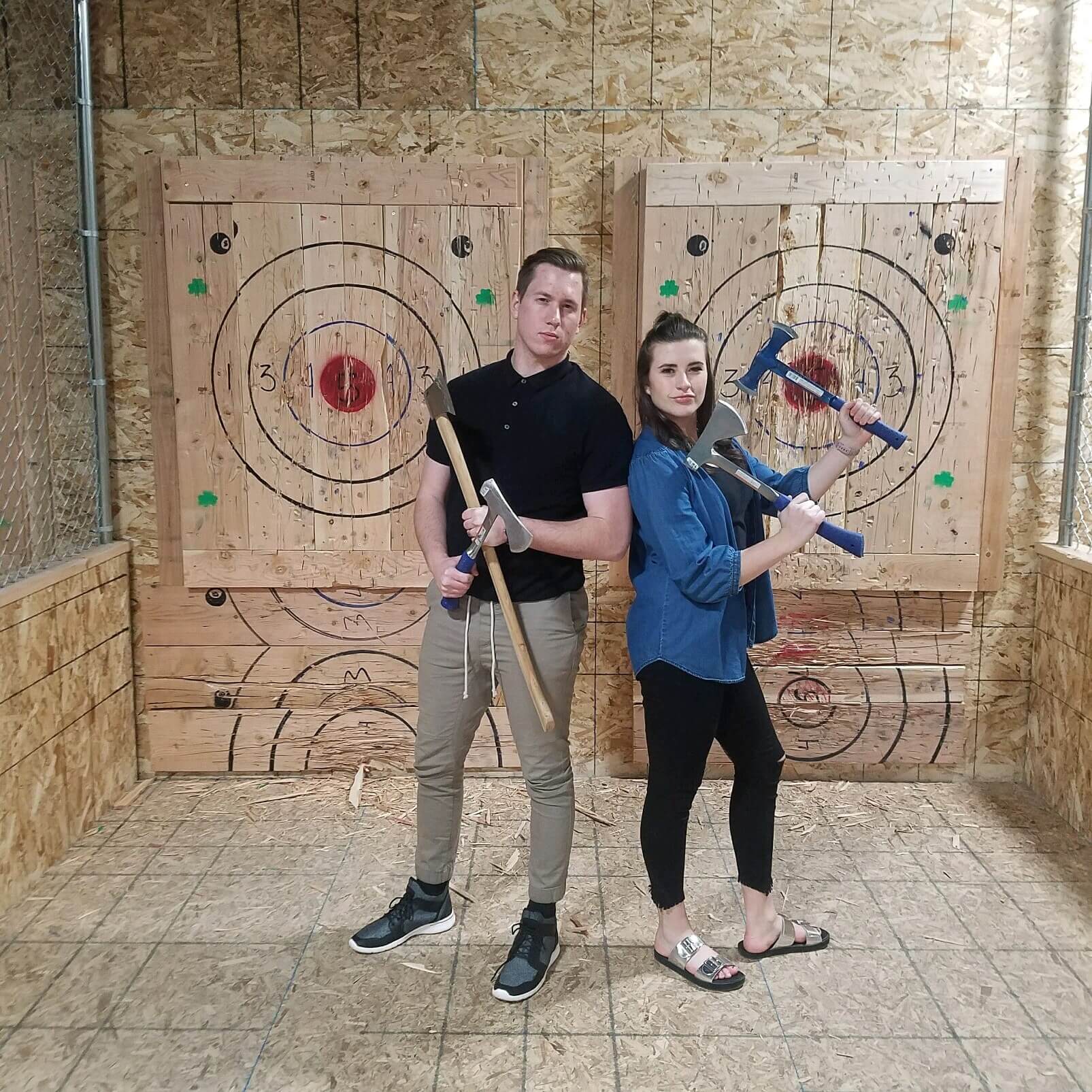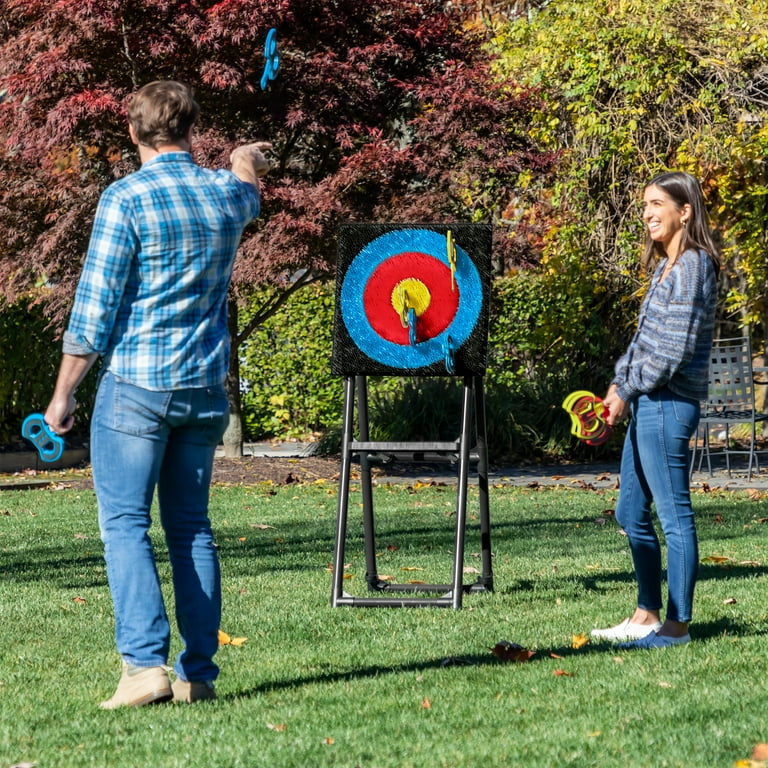Step Up Your Game with Axe Throwing Denver: Master Your Skills Today
Step Up Your Game with Axe Throwing Denver: Master Your Skills Today
Blog Article
The Enjoyable of Axe Throwing: How This Sport Incorporates Ability and Adrenaline for a Good Time
Axe throwing has emerged as an astounding sporting activity that masterfully intertwines the requirement for exact ability with the rush of adrenaline, offering participants a appealing and one-of-a-kind experience. The act of tossing an axe towards a target demands focus and strategy, concurrently fostering an atmosphere of sociability and friendly rivalry.
The Beginnings of Axe Throwing
Axe tossing, an entertainment activity that has actually gained significant popularity in current years, traces its origins back to ancient times. The earliest documents of axe use in competitive contexts are discovered amongst the Celts and Vikings, who tossed axes for sport as well as in fight training.
Middle ages European warriors, particularly throughout the Center Ages, exercised axe tossing as component of their martial training. The Francisca, a kind of tossing axe utilized by the Franks, ended up being famous for its dangerous precision. This standard weapon was created to be tossed at opponent guards and shield, showcasing its double energy in both sporting activity and battle.
In even more recent history, axe tossing saw a resurgence in the logging camps of North America in the 19th and 20th centuries. Lumberjacks would certainly involve in pleasant competition, testing their accuracy and strength by aiming at wood targets. This evolution from a survival skill to a leisure task has actually paved the means for its modern resurgence, with specialized venues and organizations now commemorating the sporting activity worldwide.
Equipment You Required
Recognizing the rich history of axe throwing improves the recognition of the sporting activity's modern iteration. For leisure and affordable axe throwing, the most generally made use of type is the hatchet, typically weighing between 1.25 to 2 extra pounds with a manage length of about 16 inches.
Similarly essential is the target. Regulation targets are created from wood, with softwood varieties like want or cottonwood being chosen for their ability to take in and hold the axe. The target is usually separated into 5 concentric circles, each with a particular factor value, to help with rating.
Safety equipment, though commonly ignored, is crucial. Protective handwear covers can improve grasp and stop blisters, while closed-toed footwear are a must to shield feet from dropped axes (denver axe throwing). Finally, a well-lit, large tossing area, full with safety obstacles, ensures a regulated setting where participants can concentrate on sharpening their skills.
Standard Techniques Clarified
Grasping the basic methods of axe throwing is important for both safety and proficiency. The initial method to understand is the grasp. Hold the axe with a company, yet loosened up hold, comparable to holding a golf club. The leading hand needs to be positioned directly below the axe head, while the non-dominant hand supports the end of the manage.
Your leading foot ought to be a little ahead, aligning with your target. This positioning help in keeping stability and guiding power precisely towards the target.

Security First
Making sure security in axe throwing is vital to developing a delightful and injury-free experience. Security determines start with the place layout. A well-designed axe throwing center features clear separations in between throwing lanes, strong backgrounds to capture stray axes, and non-slip flooring to avoid accidents. In addition, adequate lighting is critical to assist participants maintain visual accuracy and spatial understanding.
Advantages of Axe Throwing
Axe throwing offers a myriad of advantages that expand past simple entertainment. Physically, it supplies a full-body workout, involving muscular tissues in the arms, shoulders, back, and core. The repetitive activity of tossing the axe additionally enhances hand-eye control and great motor skills. For those looking to improve their general physical fitness, axe throwing can function as a vibrant and appealing type of exercise.
Psychologically, axe throwing requires emphasis, technique, and accuracy, making it a superb way to develop cognitive skills. The concentration required to hit the target can function as a type of mindfulness, allowing participants to remove their minds and reduce tension. This mental engagement can be particularly advantageous in aiding individuals develop much better problem-solving abilities and mental strength.
Socially, axe throwing is commonly enjoyed in team settings, fostering team-building and camaraderie. Whether as click to investigate component of a corporate occasion or a laid-back outing with good friends, the sport urges communication and cooperation. Additionally, the communal experience of discovering and enhancing together can reinforce relationships and create long lasting memories.
Verdict

The earliest documents of axe use in competitive contexts are located amongst the Celts and Vikings, that threw axes for sport as well as in fight training. Release the axe when your hands are around at eye level, enabling the axe's natural turning to direct it towards the target.
A well-designed axe tossing center attributes clear separations between tossing lanes, tough backgrounds to catch roaming axes, and non-slip floor covering to stop mishaps. Individuals should be advised on the correct means to throw the axe and take care of, highlighting controlled, intentional movements over strong throws.
In recap, axe tossing stands out as a sport that masterfully integrates ability, precision, and adrenaline.
Report this page